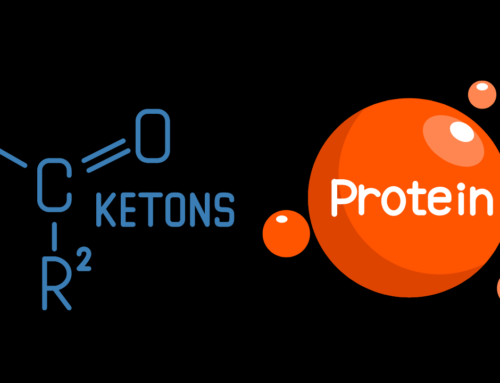There’s always a debate about carbs and fats as a fuel source. Low carb proponents advocate the use of fat as your main fuel source. On the other end of the spectrum, people extol the power of carbs to get you through a hard weight training session.
Who is right?
In my view, BOTH are right.
You want to increase the use of BOTH fats and carbs to the highest degree and keep the ability to SWITCH back and forth as needed. The fancy term for this is “metabolic flexibility” first coined in the research by Kelley and Mandarino in 2000 (5).
When you lose this metabolic flexibility, your risk for diseases such as type 2 diabetes increases (2).
Metabolic flexibility allows you to use fat at a higher rate (better fat loss) while still maintaining the ability to use carbs for better performance. BOTH fats and carbs are useful, and there is no need to cut either one from your diet.
This flexibility is how your body transitions between fats and carbs. People tend to focus on either fat metabolism or carbohydrate metabolism. But metabolic flexibility, which is the area I studied for my PhD research, looks at both metabolisms and how your body switches back and forth between the two.
Here’s How Carbs And Fats Fuel You
On a day when your activity level is lower , you would generally want to be able to use fat as the primary fuel source. Why? Because it’s going to help body composition and there’s no need to use carbohydrates for low-level activity.
If you go to the gym and start lifting (which I highly recommend, especially for fat loss and performance), you want to transition to carbohydrates. Because this is going to fuel better performance and more flex appeal.
Research has shown that those who are on a very low carb diet for prolonged periods of time demonstrate a reduced ability to fully use them during exercise (1) (7).
Metabolic flexibility allows you to get the best of both worlds by using carbohydrates for fuel during exercise and fats for fuel the rest of your day.
But What about the Ketogenic Diet?
I get emails saying if the goal is to ramp up the use of fat, I need to recommend a ketogenic diet.
I think a keto approach MAY work okay for some ultra-endurance athletes, but the catch is even they will still have periods where they still need power.
A ketogenic diet is one that’s moderate to low in protein and super high (sometimes up to 80%) fat, with very low carbs (commonly 30-50 grams a day). To put it in perspective, if you ate 1 whole bagel per day, you would be over your allotment of carbs on a keto diet.
Let me give you an example on the power of carbs.
I was the nutrition support person for the RAAM (Race Across America) several years ago. Despite it being a long race (7 days to pedal a bike from San Diego CA to Atlantic City on a 4-person team), the average power output was quite high.
The cyclists needed the ability to “drop the hammer” and power past the competition using carbs as a fuel. And I haven’t seen data showing that ketones as a fuel source can match carbs for power output.
Here’s The Deal With Carbs And Fats
You need to fuel your higher intensity training most of the time with carbohydrates. Only carbohydrates are able produce sustained high power outputs and speed. You should also have periods of time where carbs are lower to allow your insulin levels to drop and push your body to use more fat through increased fatty acid oxidation.
Fatty acid oxidation rates during low intensity exercise are highly variable (3), (4) & (6). This is typically done when you are not doing a heavy anaerobic session.
Wrapping Up
Metabolic flexibility explains how our bodies use both fats and carbohydrates for fuel. Generally, you want to be using fats for fuel for your daily activities and carbohydrates for fuel during training sessions.
So, to take advantage of the wonder of metabolic flexibility, increase carbohydrate intake before and after a training session, and decrease carbohydrate intake when you’re just sitting around reading this article.
References
1) Burke LM, Angus DJ, Cox GR, Cummings NK, Febbraio MA, Gawthorn K, Hawley JA, Minehan M, Martin DT, Hargreaves M. “Effect of fat adaptation and carbohydrate restoration on metabolism and performance during prolonged cycling.” J Appl Physiol (1985). 2000 Dec;89(6):2413-21
2) Corpeleijn E, Saris WH, Blaak EE. “Metabolic flexibility in the development of insulin resistance and type 2 diabetes: effects of lifestyle.”Obes Rev. 2009 Mar;10(2):178-93. doi: 10.1111/j.1467-789X.2008.00544. x. Epub 2009 Jan 15.
3) Goedecke, JH, St Clair Gibson, A, Grobler, L, Collins, M, Noakes, TD, and Lambert, EV. Determinants of the variability in respiratory exchange ratio at rest and during exercise in trained athletes. Am J Physiol Endocrinol Metab 279: E1325–E1334, 2000.
4) Helge, JW, Fraser, AM, Kriketos, AD, Jenkins, AB, Calvert, GD, Ayre, KJ, and Storlien, LH. Interrelationships between muscle fiber type, substrate oxidation and body fat. Int J Obes Relat Metab Disord 23: 986–991, 1999.
5) Kelley DE, Mandarino LJ “Fuel selection in human skeletal muscle in insulin resistance: a reexamination.”Diabetes. 2000 May;49(5):677-83.
6) Nelson, Michael T; Biltz, George R.; Dengel, Donald R.“Repeatability of Respiratory Exchange Ratio Time Series Analysis.” Journal of Strength & Conditioning Research, ahead of print, March 10, 2015
7) Stellingwerff T, Spriet LL, Watt MJ, Kimber NE, Hargreaves M, Hawley JA, Burke LM. “Decreased PDH activation and glycogenolysis during exercise following fat adaptation with carbohydrate restoration.” Am J Physiol Endocrinol Metab. 2006 Feb;290(2):E380-8. Epub 2005




Leave A Comment